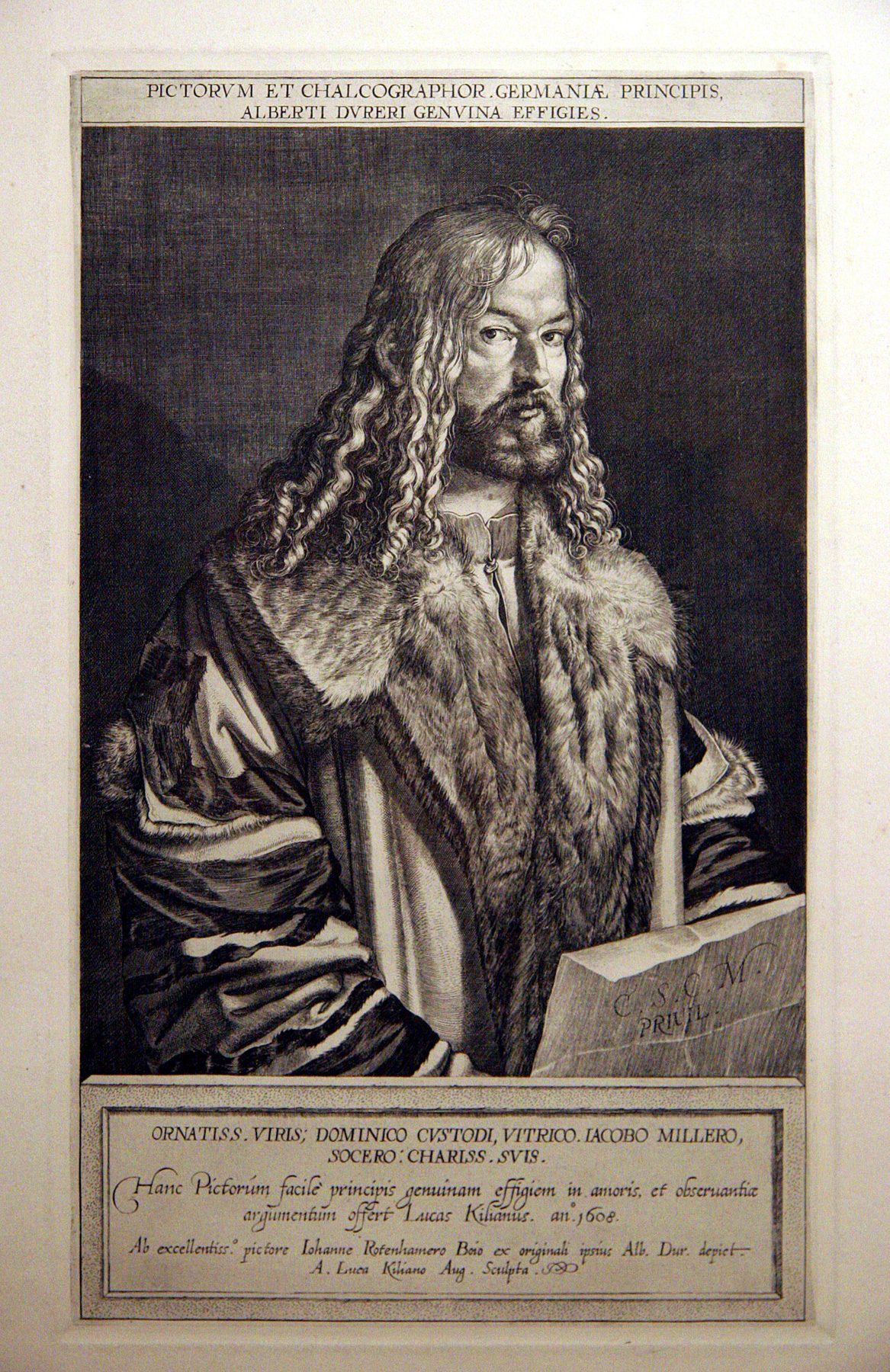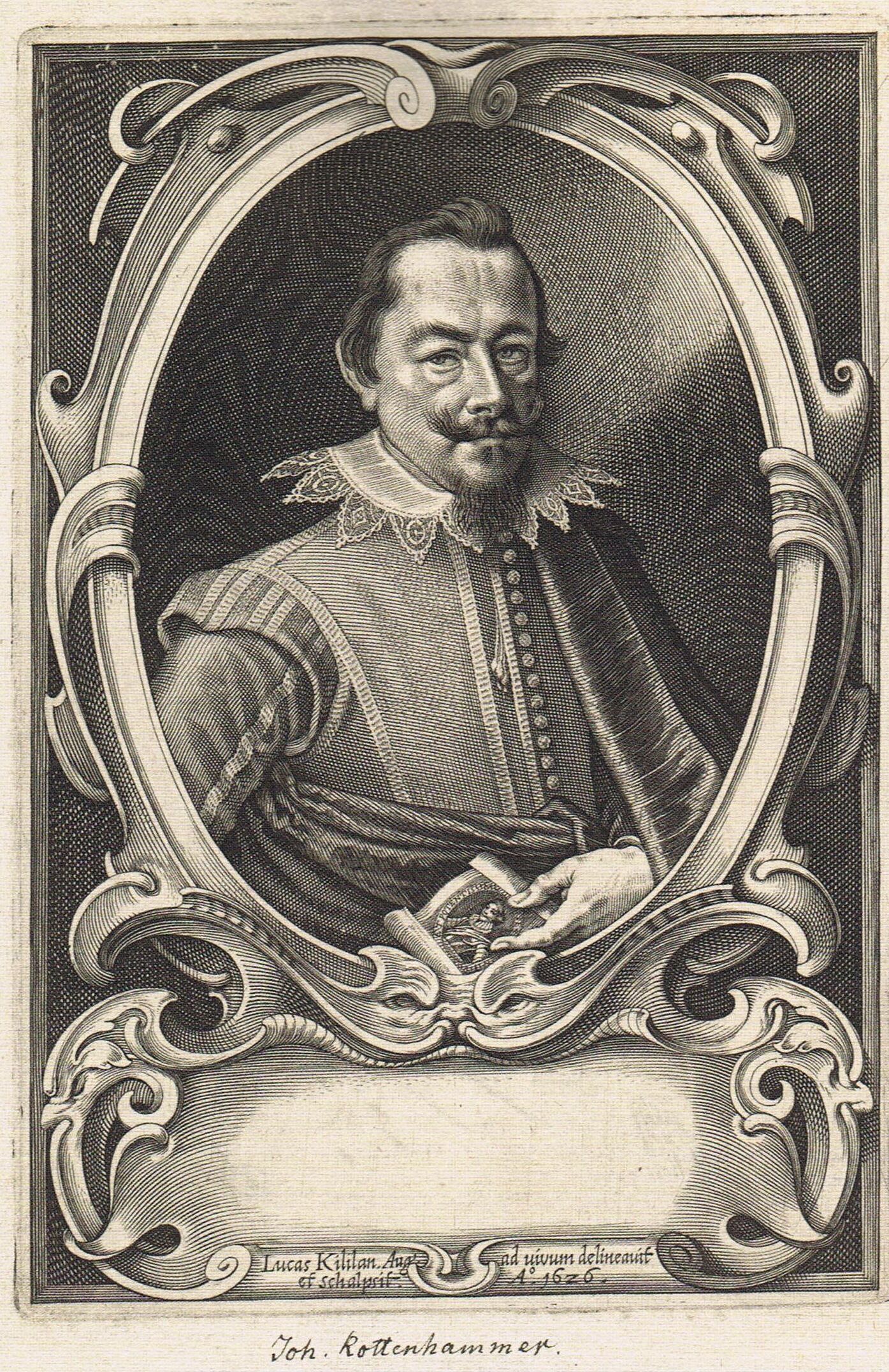|
Lucas Kilian
Lucas Kilian (1579 – 1637) was a German engraver and member of the Kilian family of engravers in Augsburg. Biography He was the son of Bartholomaus Kilian the elder and Maria Pfeiffelmann. After his father's death in 1588 his mother remarried Dominicus Custos and he and his brother Wolfgang became his pupils.Lucas Kilian in the Kilian's engraved portrait of Albrecht Dürer, based on a Dürer self-portrait from a copy of Dürer's '' Feast of the Rosary
''Feast of the Rosary'' (German: '' ...
[...More Info...] [...Related Items...] OR: [Wikipedia] [Google] [Baidu] |
Teutsche Academie
The ''German Academy of the Noble Arts of Architecture, Sculpture and Painting'', or ''Teutsche Academie'', refers to a comprehensive dictionary of art by Joachim von Sandrart published in the late 17th century. The first version was published in 1675 and it included a compilation of artist biographies that were later accompanied by illustrations by Richard Collin for a 1683 Latin edition by Christianus Rhodius. The list of portrait illustrations follows and is in page order. Most of the biographies were translated into German from earlier work by Karel van Mander and Cornelis de Bie, but Sandrart had travelled extensively in Europe and added many original biographies of German-born artists to his list. The illustrated portraits of artists born before his time were mostly based on 17th-century engravings by Hieronymus Cock and Jan Meyssens, many of which had also been re-published in De Bie's Het Gulden Cabinet ''Het Gulden Cabinet vande Edel Vry Schilder-Const'' or ''The Golde ... [...More Info...] [...Related Items...] OR: [Wikipedia] [Google] [Baidu] |
Augsburg
Augsburg (; bar , Augschburg , links=https://en.wikipedia.org/wiki/Swabian_German , label=Swabian German, , ) is a city in Swabia, Bavaria, Germany, around west of Bavarian capital Munich. It is a university town and regional seat of the ''Regierungsbezirk'' Schwaben with an impressive Altstadt (historical city centre). Augsburg is an urban district and home to the institutions of the Landkreis Augsburg. It is the third-largest city in Bavaria (after Munich and Nuremberg) with a population of 300,000 inhabitants, with 885,000 in its metropolitan area. After Neuss, Trier, Cologne and Xanten, Augsburg is one of Germany's oldest cities, founded in 15 BC by the Romans as Augsburg#Early history, Augusta Vindelicorum, named after the Roman emperor Augustus. It was a Free Imperial City from 1276 to 1803 and the home of the patrician (post-Roman Europe), patrician Fugger and Welser families that dominated European banking in the 16th century. According to Behringer, in the sixteen ... [...More Info...] [...Related Items...] OR: [Wikipedia] [Google] [Baidu] |
Germany
Germany,, officially the Federal Republic of Germany, is a country in Central Europe. It is the second most populous country in Europe after Russia, and the most populous member state of the European Union. Germany is situated between the Baltic and North seas to the north, and the Alps to the south; it covers an area of , with a population of almost 84 million within its 16 constituent states. Germany borders Denmark to the north, Poland and the Czech Republic to the east, Austria and Switzerland to the south, and France, Luxembourg, Belgium, and the Netherlands to the west. The nation's capital and most populous city is Berlin and its financial centre is Frankfurt; the largest urban area is the Ruhr. Various Germanic tribes have inhabited the northern parts of modern Germany since classical antiquity. A region named Germania was documented before AD 100. In 962, the Kingdom of Germany formed the bulk of the Holy Roman Empire. During the 16th ce ... [...More Info...] [...Related Items...] OR: [Wikipedia] [Google] [Baidu] |
Wolfgang Kilian
Wolfgang Kilian (1581–1662) was a German engraver and member of the Kilian family of engravers in Augsburg. Biography He was the son of Bartholomaus Kilian the elder and Maria Pfeiffelmann. After his father's death in 1583 his mother remarried Dominicus Custos and he and his brother Lucas became his pupils.Wolfgang Kilian in the From 1604–1608 he travelled in Italy and worked in Venice, Mantua, and Milan. On his return he married and continued in the family workshop. He was the father of the engravers Bartholomaus the younger and Philipp
Philipp is both a surname and a give ...
[...More Info...] [...Related Items...] OR: [Wikipedia] [Google] [Baidu] |
Lucas Kilian Johannes Rottenhammer
Lucas or LUCAS may refer to: People * Lucas (surname) * Lucas (given name) Arts and entertainment * Luca Family Singers, also known as "lucas ligner en torsk" * ''Lucas'' (album) (2007), an album by Skeletons and the Kings of All Cities * ''Lucas'' (film) (1986) an American rom-com * ''Lucas'' (novel) (2003), by Kevin Brooks * Lucas (''Mother 3''), a playable character in ''Mother 3'' and the ''Super Smash Bros.'' series since ''Brawl'' Organisations * Lucas Industries, a former British manufacturer of motor industry and aerospace industry components * Lucasfilm, an American film and television production company * LucasVarity, a defunct British automotive parts manufacturer, successor to Lucas Industries Mathematics * Lucas number, a series of integers similar to the Fibonacci number Places Australia * Lucas, Victoria Canada Mexico * Cabo San Lucas, Baja California United States * Lucas Township (other) * Lucas, Illinois * Lucas, Iowa * Lucas County, Iowa ... [...More Info...] [...Related Items...] OR: [Wikipedia] [Google] [Baidu] |
Dominicus Custos
Dominicus Custos (1560–1612) was a Flemish artist, printer and copperplate engraver, who worked in the service of Emperor Rudolph II in Prague. Dominicus was born in Antwerp, the son of Pieter Balten, and settled in Augsburg as the second husband of the widow of Bartholomäus Kilian (1548–1588), a goldsmith from Silesia and the father of Wolfgang and Lukas Kilian; they were trained by Dominicus in the art of engraving after their father's death. Dominicus was the father of David Custodis, also an Augsburg engraver. Custos and the humanist Marcus Henning collaborated in producing the work ''"Tirolensium principum comitum"'' which appeared in 1599 and depicted 28 Counts of Tyrol from Albert IV (1190–1253) to Rudolf II (1552–1612). Custos was responsible for the engravings while Henning took care of the text and eulogies. (see The Spanish Hall at Schloss Ambras) Between 1602 and 1604 he published the ''"Atrium heroicum"'' in four parts. This was a collection of 171 e ... [...More Info...] [...Related Items...] OR: [Wikipedia] [Google] [Baidu] |
Albrecht Dürer
Albrecht Dürer (; ; hu, Ajtósi Adalbert; 21 May 1471 – 6 April 1528),Müller, Peter O. (1993) ''Substantiv-Derivation in Den Schriften Albrecht Dürers'', Walter de Gruyter. . sometimes spelled in English as Durer (without an umlaut) or Duerer, was a German painter, printmaker, and theorist of the German Renaissance. Born in Nuremberg, Dürer established his reputation and influence across Europe in his twenties due to his high-quality woodcut prints. He was in contact with the major Italian artists of his time, including Raphael, Giovanni Bellini, and Leonardo da Vinci, and from 1512 was patronized by Emperor Maximilian I. Dürer's vast body of work includes engravings, his preferred technique in his later prints, altarpieces, portraits and self-portraits, watercolours and books. The woodcuts series are more Gothic than the rest of his work. His well-known engravings include the three '' Meisterstiche'' (master prints) ''Knight, Death and the Devil'' (1513), '' Sain ... [...More Info...] [...Related Items...] OR: [Wikipedia] [Google] [Baidu] |
Feast Of The Rosary
''Feast of the Rosary'' (German: ''Rosenkranzfest'') is a 1506 oil painting by Albrecht Dürer, now in the National Gallery, Prague, Czech Republic. According to Czechoslovakian art historian Jaroslav Pešina, it is "probably the most superb painting that a German master has ever created." The work also relates to a series of artworks commissioned by Maximilian I, his Burgundian subjects or figures close to his family to commemorate the Duchess Mary of Burgundy, Maximilian's first wife and to provide the focus for a cult-like phenomenon that associated her name-saint the Virgin Mary. History The work was initially commissioned by Jakob Fugger, an intermediary between emperor Maximilian I and Pope Julius II, during the painter's stay as the banker's guest in Augsburg, though it was produced whilst the painter was in Venice. The contract was renewed in the Italian city by the fraternity of traders from Nuremberg (Dürer's hometown) and from other German cities, the latter being ... [...More Info...] [...Related Items...] OR: [Wikipedia] [Google] [Baidu] |
Johann Rottenhammer
Johann Rottenhammer, or Hans Rottenhammer (1564 – 14 August 1625), was a German painter. He specialized in highly finished paintings on a small scale. Biography He was born in Munich, where he studied until 1588 under Hans Donauer the Elder. In 1593-4 (and perhaps earlier) he was in Rome, and he then settled in Venice from 1595-6 to 1606, before returning to Germany and settling in Augsburg, working also in Munich. He died in Augsburg, apparently in some poverty, and according to some sources an alcoholic. Work In Venice he gained a reputation for small highly finished cabinet paintings on copper, of religious and mythological subjects, combining German and Italian elements of style. In particular he combines the landscape tradition of the North with the compositional and figure styles of Tintoretto and Paolo Veronese, Veronese. While in Venice, Rottenhammer made a copy of Albrecht Dürer, Albrecht Dürer's painting ''Feast of the Rosary'', until the 19th century in the ... [...More Info...] [...Related Items...] OR: [Wikipedia] [Google] [Baidu] |
Cornelis Cornelisz
Cornelis Corneliszoon van Haarlem (1562 – 11 November 1638) was a Dutch Golden Age painter and draughtsman, one of the leading Northern Mannerist artists in the Netherlands, and an important forerunner of Frans Hals as a portraitist. Biography Born in Haarlem, Cornelis Corneliszoon was a pupil of Pieter Pietersz in Haarlem, and later Gillis Coignet in Antwerp.Cornelis Cornelisz. van Haarlem in the He is known among art historians as a member of the , who were highly influenced by the work of |





.jpg)

